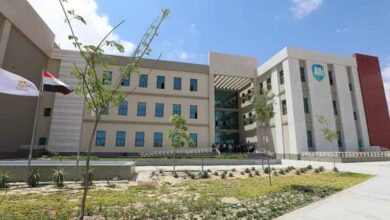
Birth rates increased last year across all the Egyptian governorates, with Cairo maintaining the highest rates, said Tariq Tawfiq, rapporteur of the National Council for Population.
Three Upper Egypt governorates were among the top 10 governorates for birth rates last year, he said.
According to Tawfiq, the 10 governorates were Cairo, Giza, Sharqiya, Beheira, Minya, Daqahliya, Sohag, Assiut, Qaliubiya and Gharbiya with a total of 2.6 million births.
The number of new births in Cairo last year amounted to 241,000,223,000 in Giza,187,000 in Sharqiya, 179,000 in Beheira, 177,000 in Minya, 156,000 in Daqahliya, 153,000 in Sohag, 144,000 in Assiut, 134,000 in Qaliubiya, and 125,000 in Gharbiya. South Sinai came at the end of the list with 3,372 births, Tawfiq told Al-Masry Al-Youm.
The current average birth rate in Egypt is four children per woman. If this rate continues, Egypt’s population is expected to reach 128 million in 2030. If the total fertility rate drops to 3.5 per woman, the population will reach 120 million in 2030, he said.
The Central Agency for Public Mobilization and Statistics (CAPMAS) said that the population of Egypt has reached 93.332 million, indicating that the population rose from 72.8 million in 2006 to 92.1 million at the beginning of 2017. The numbers show an 19.3 million increase since the latest census, 51 percent males, and 49 percent females respectively.
In its World Population Day statement, CAPMAS indicated that Cairo is the largest governorate in terms of population, with a population of about 9.6 million, while South Sinai has the lowest number out of the governorates with 173,000 people, as of January 2017.
“The Egyptian population is considered a young society. The age group below 15 years is one third of the population, 31.3 percent, while the proportion of the population ages 65 and over was only 4.3 percent, at the beginning of 2017,” CAPMAS said.
The statement pointed out that the proportion of the urban population is about 43 percent, compared to 57 percent rural population.
CAMPAS stated that the birth rate rose from 25.7 live births per 1,000 population in 2006 to 28.6 live births per 1,000 population in 2016, while the mortality rate decreased slightly from 6.3 deaths per 1,000 population in 2006 to 6.1 deaths per thousand of the population in 2016.
The organization said that world population was at 7.4 billion on July 15, 2016 (according to the Population Reference Bureau of Washington), of which 1.3 billion lived in the more developed countries, 6.2 billion lived in less developed countries, and 54 percent of the world’s population lived in urban areas.
The world population is expected to reach 9.9 billion by 2050, it said, adding that the world’s natural growth rate was 1.2 percent in 2016.
Edited translation from Al-Masry Al-Youm




